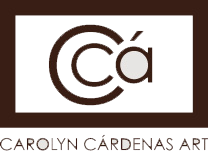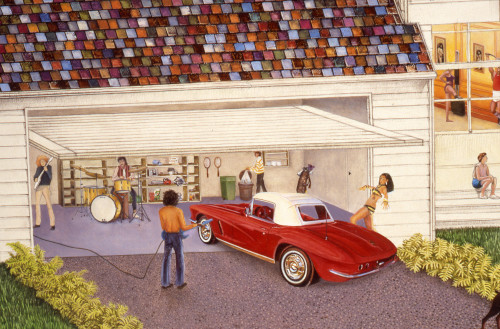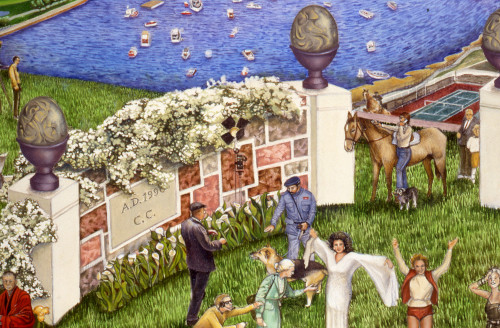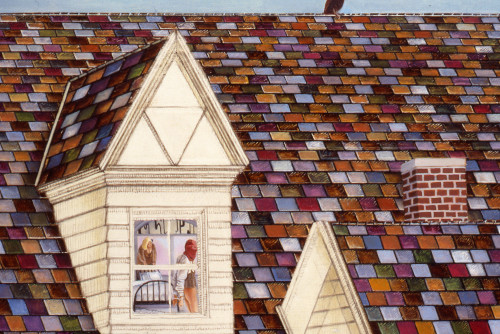Carolyn Cárdenas
West of Eden
1990-Current
West of Eden is a large triptych conceived early in the artist's life to represent her "landmark work." The artwork is almost six feet in length with three cradled panels, hinged and framed in a maple structure, which presents layers of west coast lifestyles. The piece was designed to be completed on the death of the artist and has only been shown twice to date. The glitz of soap operas and impressive facades of three major cities, L.A., San Francisco and Seattle, are combined with the beauty of their pacific coast landscape. From drug users, street people and gang wars to the depiction of ostentatious materialism and glamorous wealthy denizens, the viewer takes in hundreds of figures, many no larger than an inch high. Not unlike Bosch's Garden of Earthly Delights, using egg/oil tempera to illustrate contemporary issues is homage to the wonderment of a time-honored media journey.
The Renaissance painting process itself is a highly complex one. Working in egg tempera requires a certain endearment to detail; over half the painting is usually accomplished with a tiny brush “stroking” the tempera on the surface as in a crosshatched drawing. If one imagines five to ten of these identically detailed drawings suspended between alternating layers of transparent color, then the beauty of the mixed technique becomes more apparent. In achieving this glowing effect, there are basically three steps: preparation of the panel which includes cradling, sizing, and the making and application of gesso; designing and transferring the drawing in a pure (only yolk) egg tempera; and application of color which consists of preparing Maroger oil medium for glaze, the glazing itself, grinding powdered pigment into egg/oil (whole egg) for heightening over glaze, and final opaque and transparent bits of detail painting. Although this description of the process is a condensation of tempera techniques, the complexity and time-consuming nature of using the medium remains clear.




